Andrea Munari
A low-PAPR Pilot Design and Optimization for OTFS Modulation
Mar 19, 2025Abstract:Orthogonal time frequency space (OTFS) modulation has been proposed recently as a new waveform in the context of doubly-selective multi-path channels. This article proposes a novel pilot design that improves OTFS spectral efficiency (SE) while reducing its peak-to-average power ratio (PAPR). Instead of adopting an embedded data-orthogonal pilot for channel estimation, our scheme relies on Chu sequences superimposed to data symbols. We optimize the construction by investigating the best energy split between pilot and data symbols. Two equalizers, and an iterative channel estimation and equalization procedure are considered. We present extensive numerical results of relevant performance metrics, including the normalized mean squared error of the estimator, bit error rate, PAPR and SE. Our results show that, while the embedded pilot scheme estimates the channel more accurately, our approach yields a better tradeoff by achieving much higher spectral efficiency and lower PAPR.
Age-of-Gradient Updates for Federated Learning over Random Access Channels
Oct 15, 2024
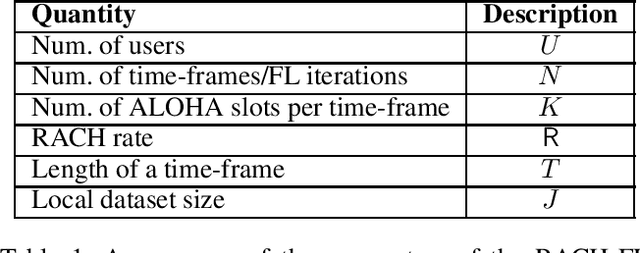

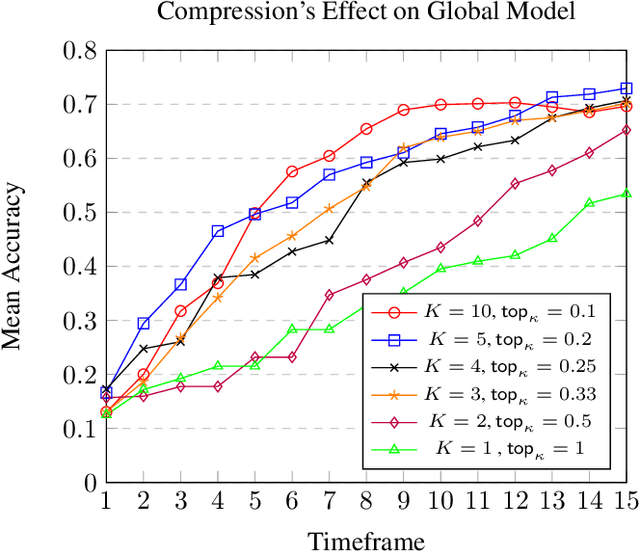
Abstract:This paper studies the problem of federated training of a deep neural network (DNN) over a random access channel (RACH) such as in computer networks, wireless networks, and cellular systems. More precisely, a set of remote users participate in training a centralized DNN model using SGD under the coordination of a parameter server (PS). The local model updates are transmitted from the remote users to the PS over a RACH using a slotted ALOHA protocol. The PS collects the updates from the remote users, accumulates them, and sends central model updates to the users at regular time intervals. We refer to this setting as the RACH-FL setting. The RACH-FL setting crucially addresses the problem of jointly designing a (i) client selection and (ii) gradient compression strategy which addresses the communication constraints between the remote users and the PS when transmission occurs over a RACH. For the RACH-FL setting, we propose a policy, which we term the ''age-of-gradient'' (AoG) policy in which (i) gradient sparsification is performed using top-K sparsification, (ii) the error correction is performed using memory accumulation, and (iii) the slot transmission probability is obtained by comparing the current local memory magnitude minus the magnitude of the gradient update to a threshold. Intuitively, the AoG measure of ''freshness'' of the memory state is reminiscent of the concept of age-of-information (AoI) in the context of communication theory and provides a rather natural interpretation of this policy. Numerical simulations show the superior performance of the AoG policy as compared to other RACH-FL policies.
Timely Status Updates in Slotted ALOHA Network With Energy Harvesting
Apr 29, 2024Abstract:We investigate the age of information (AoI) in a scenario where energy-harvesting devices send status updates to a gateway following the slotted ALOHA protocol and receive no feedback. We let the devices adjust the transmission probabilities based on their current battery level. Using a Markovian analysis, we derive analytically the average AoI. We further provide an approximate analysis for accurate and easy-to-compute approximations of both the average AoI and the age-violation probability (AVP), i.e., the probability that the AoI exceeds a given threshold. We also analyze the average throughput. Via numerical results, we investigate two baseline strategies: transmit a new update whenever possible to exploit every opportunity to reduce the AoI, and transmit only when sufficient energy is available to increase the chance of successful decoding. The two strategies are beneficial for low and high update-generation rates, respectively. We show that an optimized policy that balances the two strategies outperforms them significantly in terms of both AoI metrics and throughput. Finally, we show the benefit of decoding multiple packets in a slot using successive interference cancellation and adapting the transmission probability based on both the current battery level and the time elapsed since the last transmission.
Timely and Efficient Information Delivery in Real-Time Industrial IoT Networks
Nov 22, 2023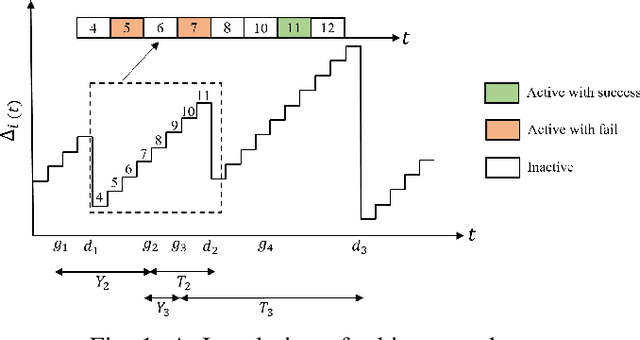

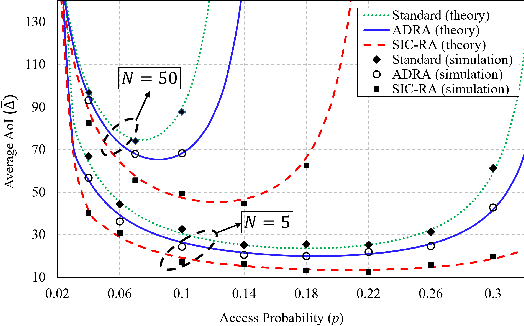
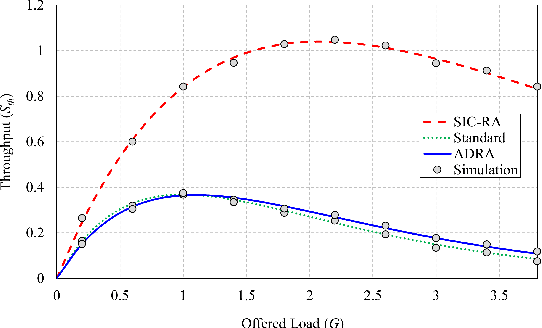
Abstract:Enabling real-time communication in Industrial Internet of Things (IIoT) networks is crucial to support autonomous, self-organized and re-configurable industrial automation for Industry 4.0 and the forthcoming Industry 5.0. In this paper, we consider a SIC-assisted real-time IIoT network, in which sensor nodes generate reports according to an event-generation probability that is specific for the monitored phenomena. The reports are delivered over a block-fading channel to a common Access Point (AP) in slotted ALOHA fashion, which leverages the imbalances in the received powers among the contending users and applies successive interference cancellation (SIC) to decode user packets from the collisions. We provide an extensive analytical treatment of the setup, deriving the Age of Information (AoI), throughput and deadline violation probability, when the AP has access to both the perfect as well as the imperfect channel-state information. We show that adopting SIC improves all the performance parameters with respect to the standard slotted ALOHA, as well as to an age-dependent access method. The analytical results agree with the simulation based ones, demonstrating that investing in the SIC capability at the receiver enables this simple access method to support timely and efficient information delivery in IIoT networks.
Semantic Communications in Networked Systems
Mar 09, 2021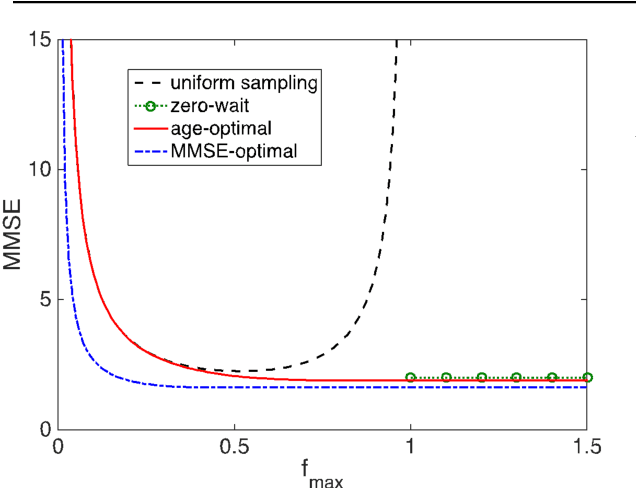
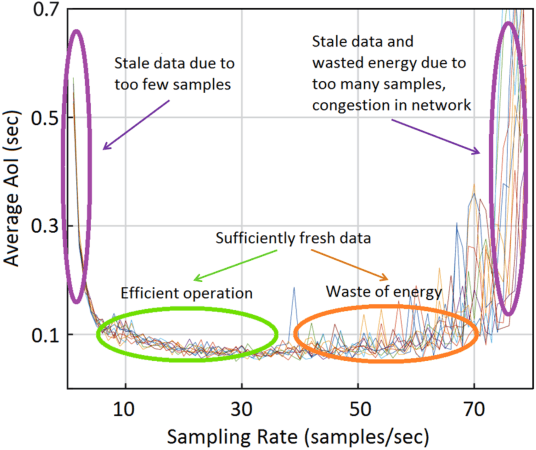

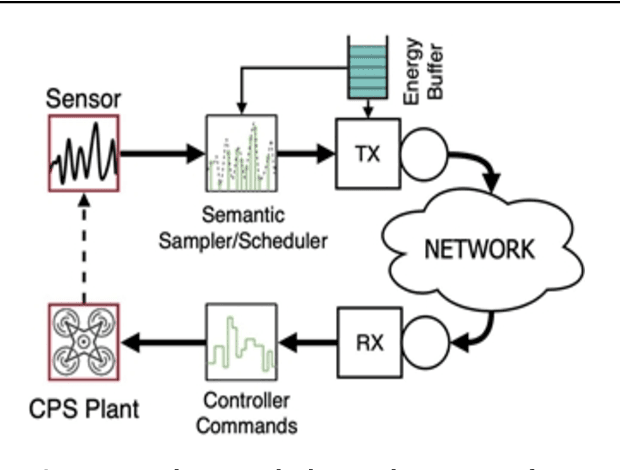
Abstract:We present our vision for a departure from the established way of architecting and assessing communication networks, by incorporating the semantics of information for communications and control in networked systems. We define semantics of information, not as the meaning of the messages, but as their significance, possibly within a real time constraint, relative to the purpose of the data exchange. We argue that research efforts must focus on laying the theoretical foundations of a redesign of the entire process of information generation, transmission and usage in unison by developing: advanced semantic metrics for communications and control systems; an optimal sampling theory combining signal sparsity and semantics, for real-time prediction, reconstruction and control under communication constraints and delays; semantic compressed sensing techniques for decision making and inference directly in the compressed domain; semantic-aware data generation, channel coding, feedback, multiple and random access schemes that reduce the volume of data and the energy consumption, increasing the number of supportable devices.
 Add to Chrome
Add to Chrome Add to Firefox
Add to Firefox Add to Edge
Add to Edge